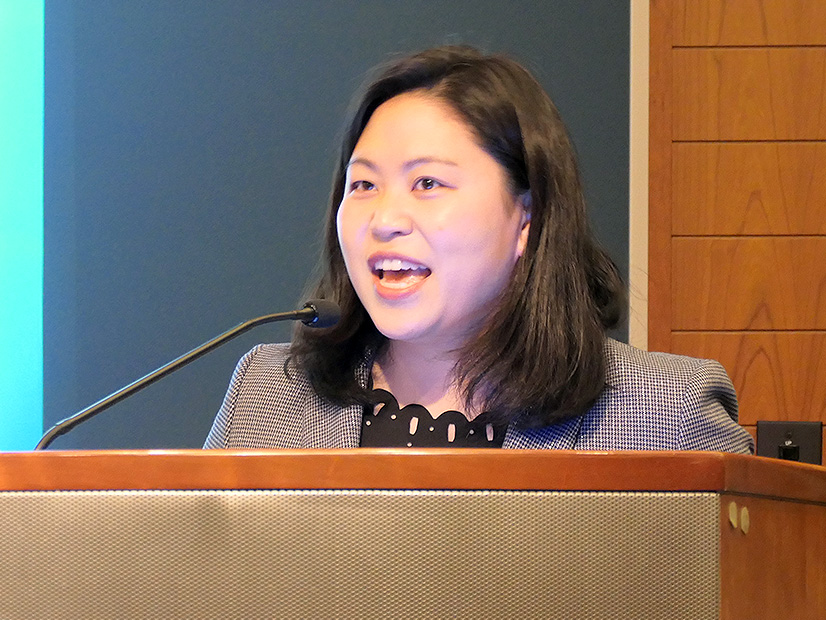On May 15, the Department of Energy’s Grid Deployment Office issued a Notice of Intent to create a process for designating “route-specific” National Interest Electric Transmission Corridors (NIETCs), an initiative to support transmission projects that address congestion, connect renewables or advance other policy goals. The accompanying Request for Information sought comments on DOE’s proposed design for the program and suggestions for other elements that should be included.
Application Requirements
Applicants must provide sufficient information about the potential route to allow DOE’s review under the National Environmental Policy Act.
DOE said it may also allow tribal authorities, states, transmission-dependent utilities, local governments, generation developers and others to submit proposals.
Applicants will be required to show that their proposed route is defined “with sufficient specificity to allow for meaningful evaluation of the potential energy and environmental impacts,” including the geographic boundaries of potential corridors, and the rationale for those boundaries.
Benefits of NIETC Designation
Under the Infrastructure Investment and Jobs Act (IIJA) and Inflation Reduction Act (IRA), DOE said the NIETC program “can assist in focusing commercial facilitation, signal opportunities for beneficial development to transmission planning entities, and unlock siting and permitting tools for transmission projects.”
The IIJA created the Transmission Facilitation Program, giving DOE $2.5 billion for public-private partnerships to co-develop transmission projects located within NIETCs. (See DOE Seeks Input on Tx Loan, ‘Anchor Tenant’ Programs.)
The IRA created the $2 billion Transmission Facility Financing program, allowing DOE to offer loan support to transmission facilities designated by the Energy Secretary as being in the national interest.
The IIJA also amended Section 216(b) of the Federal Power Act to give FERC the authority to overrule states when they deny a certificate for a line within a NIETC.
DOE’s notice included a caveat that designation of a NIETC “does not constitute selection of or a preference for a specific transmission project for financial, siting or industry planning purposes; selection for these other purposes will continue to occur through established planning and regulatory processes.”
However, some commenters expressed concern that NIETC could usurp existing transmission planning processes. (See related story, States, RTOs Caution DOE on Transmission Corridors.)
Reason for NIETC Program
DOE’s notice cites the importance of electric transmission to national “economic, energy and national security” and says more transmission capacity is needed to survive more frequent extreme weather, provide access to renewable energy and serve rising demand from electrification of transportation and industry.
The Biden administration’s goal of a 100% clean electric power sector by 2035 would require increasing transmission system capacity. DOE cites a Princeton University analysis projecting that transmission systems may need to expand by 60% by 2030 and triple by 2050.
The IIJA and IRA investments “will not be realized fully unless the United States can quickly expand enabling electric transmission infrastructure,” DOE said.
Identifying Corridors
A “key input” into the designation of NIETCs will be DOE’s triennial study of electric transmission constraints and congestion. Although previous studies were limited to considering only historic congestion, the IIJA expanded the scope to also consider anticipated future capacity constraints that could affect consumers.
DOE issued a draft Needs Study in February and expects to issue the final study this summer. The draft found that nearly all regions in the U.S. would see improved reliability and resilience from additional transmission and that those with high electricity costs — the Plains, Midwest, Mid-Atlantic, New York and California — also would benefit from access to cheaper generation.
The study said interregional transmission would produce the largest benefits, particularly new lines across interconnection seams — between the Mountain and Plains regions and between Texas and its neighbors.
It predicted that needs will shift over time to reflect impacts from the clean energy transition, evolving regional demand and increasingly extreme weather. “Significant transmission deployment is needed as soon as 2030 in the Plains, Midwest and Texas regions. By 2040, large deployments will also be needed in the Mountain, Mid-Atlantic and Southeast regions. The same is true for interregional transmission deployment; by 2040, there is a significant need for new interregional transmission between nearly all regions,” it said.
The IIJA added several outcomes, in addition to reducing congestion, that could justify transmission corridors, including impacts on a region’s “economic vitality” and growth; diversifying electric supplies; helping generators connect to the grid; and aiding the nation’s “energy independence or energy security” or “national defense and homeland security.”
The IIJA also directed DOE to maximize existing rights-of-way, avoid “sensitive environmental areas and cultural heritage sites” and consult with “affected states, Indian tribes and regional grid entities.”
The RFI sought comment on how DOE should evaluate the impact of a potential NIETC on generating host community benefits, “encouraging strong labor standards,” improving energy equity and achieving environmental justice goals, and maximizing the use of products and materials made in the U.S.
Related Authorities of FERC And Other Federal Agencies
DOE pledged to coordinate with FERC to avoid redundancy and promote efficiency in environmental reviews.
In December, FERC issued a Notice of Proposed Rulemaking to explore how it implement its “backstop” siting authority (RM22-7). (See FERC Moves to Implement New Backstop Transmission Siting Authority.)


